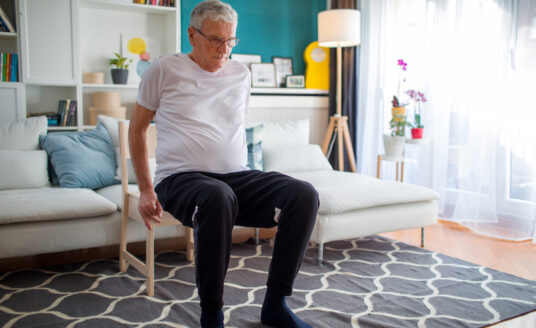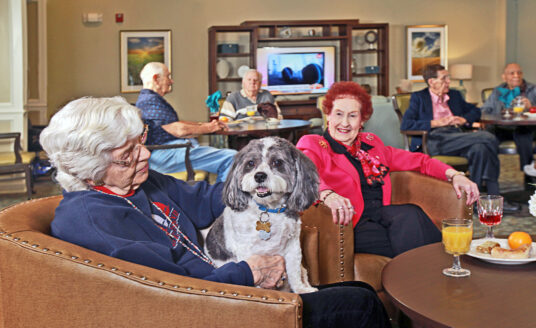Fact – one out of three people aged 65 and over fall every year. These falls account for the vast majority of fractures and broken bones in seniors, and are the most common cause for injury and death among older adults.
Hip fractures cause the greatest health problems, including long-term disability and death. Half of all seniors hospitalized for a hip fracture cannot return home or live independently. One study showed that frail, older women who broke a hip were unlikely to fully recover even 10 years after suffering the fracture.
Many types of fractures cause an increased death rate among seniors, with the highest risk of dying within the year immediately after the fracture.
It doesn’t require a fall to create a fracture. Even overuse or repetitive motions can tire muscles, put increased pressure on bones, and result in a stress fracture. And seniors simply do not have the same healing capacity as younger people.
Many factors contribute to falls among seniors. Some of these factors make recovery far more challenging, and increase the chance of another fall and subsequent fracture.
Osteoporosis
Bones weakened by osteoporosis increase the likelihood and severity of broken bones in seniors. Osteoporosis is a condition more common in women than men. With osteoporosis, the bones become brittle and fragile from loss of tissue, typically due to hormonal changes, or a calcium or vitamin D deficiency.
Symptoms of osteoporosis:
- Back pain
- Loss of height over time
- A stooped posture
- A bone that breaks much more easily than expected
Osteoporosis is often called a “silent” disease because there are typically no symptoms until a bone is broken or one or more vertebrae collapse. Frequency of testing (called a bone density scan or test) is dependent upon a number of factors, including sex, age, medications being taken, past medical history of bone loss, etc. Seniors, both male and female, should talk to their physician about testing.
Identifying a Fracture
Some fractures are obvious, but others may be harder to detect. Symptoms of fractions, aside from pain, include difficulty using or moving the injured area or nearby joints, swelling, obvious tissue deformity, and warmth, bruising, or redness. A broken bone can resemble other medical conditions, so don’t self-diagnose – contact a physician.
Prevention and Awareness
Preventing falls allow seniors to avoid the pain, complications, and loss of independence that so often follows a fracture.
There are ways to make the home safer, and there are contributing risk factors for fractures of which seniors, adult children, and caregivers should be aware.
Sixty percent of falls and fractures lead to a fatality in the home. Home hazards include:
- Slippery surfaces
- Uneven surfaces inside or outside the home
- Poor lighting
- Tripping hazards, such as loose rugs, appliance cords, or pets
- Unstable furniture
- Objects left on steps or in walkways
- Inappropriate footwear (Wear non-skid, rubber-soled, low-heeled shoes, or lace-up shoes with non-skid soles that fully support the feet.)
Other contributing risk factors contributing to a greater likelihood of falls and subsequent broken bones in seniors:
- Visual impairment
- Age 75 or older
- Female
- Low calcium intake
- Low body weight
- Family history of fractures due to osteoporosis
- Rheumatoid arthritis
- Chronic liver disease
- A previous fracture and low bone density
- Disorders of the nervous system, such as sciatica, which most commonly occurs when a herniated disk, bone spur on the spine or narrowing of the spine (spinal stenosis) compresses part of the nerve.
- Joint and muscle problems, such as arthritis.
- Difficulty with walking and balance, as with Parkinson’s disease.
- Medications that can cause dizziness or drowsiness.
- Excessive alcohol use
- Peripheral neuropathy (damage to the nerves causing weakness, numbness and pain, usually in the hands and feet).
- Leg weakness
- Defective proprioception, which is awareness of the position and movement of the body.
To potentially head off a fall and fracture:
Engage in regular physical activity and eat well. Do cardiovascular fitness exercise, strength training, and balance and flexibility exercises. Studies have shown that exercise programs not only make a fall less likely, exercise also strengthens bones and makes a full recovery more likely. Experts also recommend a healthy diet of fruits, vegetables, foods rich in calcium and vitamin D.
Tell your physician about falls. Seniors should let their physician know if they have fallen since their last checkup, even if they were not hurt.
Make the home safer. Install grab bars; increase lighting throughout the home, especially night lights; reduce or eliminate stair use; and clear pathways.
Use assistive equipment. Keep canes, walkers, and wheelchairs nearby and use them to move about the house if necessary.
Stand up slowly from a seated position. This will help avoid a sudden drop in blood pressure that may cause dizziness when rising too quickly from a seated position.
Don’t smoke. It contributes to muscle and bone loss.
Take medications as prescribed, and periodically review medications. Consult with your physician to ensure that medications are not causing issues of dizziness, balance or alertness.
If You Fall
Seniors, if you do fall, stay as calm as possible. Take some deep breaths and remain still on the floor or ground for a few moments. Decide if you are hurt before getting up. Otherwise, you may make the injury worse.
If you feel you can get up safely, roll onto your side, and rest again while your body and blood pressure adjust. Slowly rise to your hands and knees and crawl to a sturdy chair or sofa.
Keep one knee on the floor and plant your foot from the other leg on the floor. Slowly rise and turn your body towards the chair or sofa to sit.
If you live alone, it’s a good idea to carry a portable phone with you as you move about your house or wear an emergency response device. If you are hurt, or cannot get up, call 911 or activate your emergency response system.



